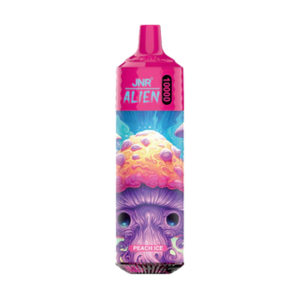How to Take Care of Your Toothbrush?
Your toothbrush is your first line of defence against cavities, gum disease, and bad breath. But have you ever thought about how to take care of the tool that takes care of your teeth? Proper toothbrush maintenance is just as important as brushing your teeth correctly. A clean and well-maintained toothbrush ensures effective cleaning and prevents bacteria from spreading in your mouth. Let’s explore the essential steps for taking care of your toothbrush with Dental Ultrasonic Cleaner and other methods and why it’s so important for your oral health.
Why Toothbrush Care Matters
Your toothbrush works hard to keep your teeth and gums healthy, but it can also become a breeding ground for bacteria if not cared for properly. Here’s why maintaining your toothbrush is crucial:
- Prevents Bacteria Build-Up: A dirty or improperly stored toothbrush can harbour harmful bacteria, which may lead to oral infections or other health issues.
- Ensures Effective Cleaning: Worn-out or dirty bristles won’t clean your teeth effectively, leaving plaque and debris behind.
- Prolongs Brush Life: Taking proper care of your toothbrush helps maintain its quality and ensures it lasts as long as intended.
How to Properly Care for Your Toothbrush
Follow these simple but effective tips to keep your toothbrush clean and in good condition:
1. Rinse Thoroughly After Use
After brushing your teeth, rinse the bristles thoroughly under running water to remove toothpaste, food particles, and debris. Give it a gentle shake to remove excess water.
2. Store It Upright
Place your toothbrush upright in a holder or cup where it can air dry naturally. Avoid laying it flat or storing it in a closed container, as this can trap moisture and encourage bacterial growth.
3. Keep It Away from Other Brushes
If you store multiple toothbrushes in the same holder, make sure they don’t touch each other. This prevents cross-contamination between brushes, especially if someone in the household is sick.
4. Avoid Covering Your Toothbrush
While it might seem hygienic to cover your toothbrush with a cap or case, doing so can create a damp environment that promotes bacteria growth. If you must use a cover for travel, ensure it has ventilation holes to allow airflow.
5. Replace It Regularly
The American Dental Association (ADA) recommends replacing your toothbrush every 3–4 months—or sooner if the bristles become frayed or worn out. A worn brush won’t clean effectively and may irritate your gums.
6. Don’t Share Your Toothbrush
Sharing toothbrushes—even with family members—can transfer bacteria, viruses, or germs from one person to another. Always use your own brush to maintain oral hygiene.
7. Clean Your Toothbrush Periodically
Every once in a while, disinfect your toothbrush to keep it extra clean:
- Soak the bristles in an antibacterial mouthwash for about 10 minutes.
- Alternatively, you can rinse the brush head with hot water (not boiling) to kill bacteria.
Common Mistakes to Avoid
Even with good intentions, some habits can harm your toothbrush or reduce its effectiveness:
- Using Harsh Cleaners: Avoid using bleach, soap, or other harsh chemicals to clean your toothbrush; these can damage the bristles and aren’t safe for oral use.
- Storing It Too Close to the Toilet: If you store your toothbrush in the bathroom, keep it at least six feet away from the toilet to avoid contamination from airborne particles when flushing.
- Not Replacing After Illness: Always replace your toothbrush after recovering from a cold, flu, or any illness that involves oral symptoms to prevent reinfection.
Travel Tips for Toothbrush Care
When travelling, maintaining proper care of your toothbrush becomes even more critical:
- Use a ventilated travel case to protect the bristles while allowing them to dry.
- Rinse and air-dry the brush as much as possible before packing it away.
- Replace the brush with a new one after returning home if it was stored in less-than-ideal conditions during travel.
Signs It’s Time for a New Toothbrush
Not sure if it’s time to replace your brush? Look out for these signs:
- The bristles are frayed or bent out of shape.
- The brush looks discoloured or has an unpleasant odour.
- You’ve been using it for more than three months.
Proper care of your toothbrush is an essential part of maintaining good oral hygiene. By rinsing it thoroughly, storing it correctly, replacing it regularly, and avoiding common mistakes, you can ensure that your toothbrush stays clean and effective at keeping your teeth healthy. If you’re looking for expert advice on oral health or need guidance on choosing the right dental tools for you and your family, reach out to Neva Dental! Their team of professionals is here to help you achieve optimal oral hygiene while ensuring you feel confident about every aspect of your dental care routine. Keep smiling brightly with Neva Dental!














Post Comment